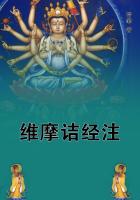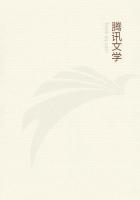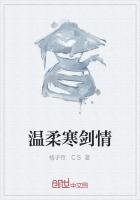He published a short note in the "Entomologists Weekly Intelligencer", 1860, asking whether the Tineina and other small moths suck flowers.)Besides observing the Leguminosae, he had already begun, as shown in the foregoing extracts, to attend to the structure of other flowers in relation to insects. At the beginning of 1860 he worked at Leschenaultia (He published a short paper on the manner of fertilisation of this flower, in the "Gardeners' Chronicle", 1871, page 1166.), which at first puzzled him, but was ultimately made out. A passage in a letter chiefly relating to Leschenaultia seems to show that it was only in the spring of 1860 that he began widely to apply his knowledge to the relation of insects to other flowers. This is somewhat surprising, when we remember that he had read Sprengel many years before. He wrote (May 14):--"I should look at this curious contrivance as specially related to visits of insects; as I begin to think is almost universally the case."Even in July 1862 he wrote to Dr. Asa Gray:--"There is no end to the adaptations. Ought not these cases to make one very cautious when one doubts about the use of all parts? I fully believe that the structure of all irregular flowers is governed in relation to insects. Insects are the Lords of the floral (to quote the witty "Athenaeum") world."He was probably attracted to the study of Orchids by the fact that several kinds are common near Down. The letters of 1860 show that these plants occupied a good deal of his attention; and in 1861 he gave part of the summer and all the autumn to the subject. He evidently considered himself idle for wasting time on Orchids, which ought to have been given to 'Variation under Domestication.' Thus he wrote:--"There is to me incomparably more interest in observing than in writing;but I feel quite guilty in trespassing on these subjects, and not sticking to varieties of the confounded cocks, hens and ducks. I hear that Lyell is savage at me. I shall never resist Linum next summer."It was in the summer of 1860 that he made out one of the most striking and familiar facts in the book, namely, the manner in which the pollen masses in Orchis are adapted for removal by insects. He wrote to Sir J.D. Hooker July 12:--"I have been examining Orchis pyramidalis, and it almost equals, perhaps even beats, your Listera case; the sticky glands are congenitally united into a saddle-shaped organ, which has great power of movement, and seizes hold of a bristle (or proboscis) in an admirable manner, and then another movement takes place in the pollen masses, by which they are beautifully adapted to leave pollen on the two LATERAL stigmatic surfaces. I never saw anything so beautiful."In June of the same year he wrote:--"You speak of adaptation being rarely VISIBLE, though present in plants. Ihave just recently been looking at the common Orchis, and I declare I think its adaptations in every part of the flower quite as beautiful and plain, or even more beautiful than in the Woodpecker. I have written and sent a notice for the "Gardeners' Chronicle" (June 9, 1860. This seems to have attracted some attention, especially among entomologists, as it was reprinted in the "Entomologists Weekly Intelligencer", 1860.), on a curious difficulty in the Bee Orchis, and should much like to hear what you think of the case. In this article I have incidentally touched on adaptation to visits of insects; but the contrivance to keep the sticky glands fresh and sticky beats almost everything in nature. I never remember having seen it described, but it must have been, and, as I ought not in my book to give the observation as my own, I should be very glad to know where this beautiful contrivance is described."He wrote also to Dr. Gray, June 8, 1860:--"Talking of adaptation, I have lately been looking at our common orchids, and I dare say the facts are as old and well-known as the hills, but I have been so struck with admiration at the contrivances, that I have sent a notice to the "Gardeners' Chronicle". The Ophrys apifera, offers, as you will see, a curious contradiction in structure."Besides attending to the fertilisation of the flowers he was already, in 1860, busy with the homologies of the parts, a subject of which he made good use in the Orchid book. He wrote to Sir Joseph Hooker (July):--"It is a real good joke my discussing homologies of Orchids with you, after examining only three or four genera; and this very fact makes me feel positive I am right! I do not quite understand some of your terms; but sometime I must get you to explain the homologies; for I am intensely interested on the subject, just as at a game of chess."This work was valuable from a systematic point of view. In 1880 he wrote to Mr. Bentham:--"It was very kind in you to write to me about the Orchideae, for it has pleased me to an extreme degree that I could have been of the LEAST use to you about the nature of the parts."The pleasure which his early observations on Orchids gave him is shown in such extracts as the following from a letter to Sir J.D. Hooker (July 27, 1861):--"You cannot conceive how the Orchids have delighted me. They came safe, but box rather smashed; cylindrical old cocoa- or snuff-canister much safer. I enclose postage. As an account of the movement, I shall allude to what I suppose is Oncidium, to make CERTAIN,--is the enclosed flower with crumpled petals this genus? Also I most specially want to know what the enclosed little globular brown Orchid is. I have only seen pollen of a Cattleya on a bee, but surely have you not unintentionally sent me what Iwanted most (after Catasetum or Mormodes), viz. one of the Epidendreae?! IPARTICULARLY want (and will presently tell you why) another spike of this little Orchid, with older flowers, some even almost withered."His delight in observation is again shown in a letter to Dr. Gray (1863). referring to Cruger's letters from Trinidad, he wrote:--"Happy man, he has actually seen crowds of bees flying round Catasetum, with the pollinia sticking to their backs!"The following extracts of letters to Sir J.D. Hooker illustrate further the interest which his work excited in him:--"Veitch sent me a grand lot this morning. What wonderful structures!
同类推荐
热门推荐














